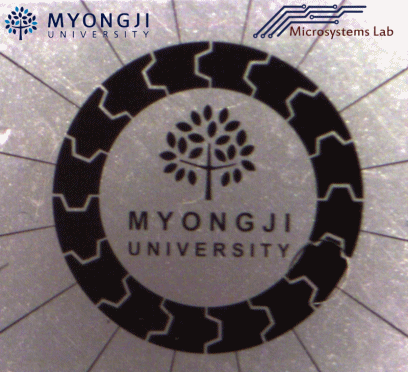Schematic of micro-object manipulation using an untethered microrobot: (a) Initial state; (b) When an acoustic wave generated by a piezo-actuator excites a bubble attached on the bottom of a microrobot, the acoustically excited bubble generates a radiation force. Because of the radiation force, an neighboring object is pulled and captured to the bubble; (c) The captured object can be carried with the microrobot propelled by electromagnetic actuation to a desired place. Note that the piezo-actuator is still turned on to hold the captured object during the carrying operation; (d) When the microrobot reaches the desired place, the carried object is released from the bubble by turning the piezo-actuator off. This work has been selected for inculsion in IOP Select.

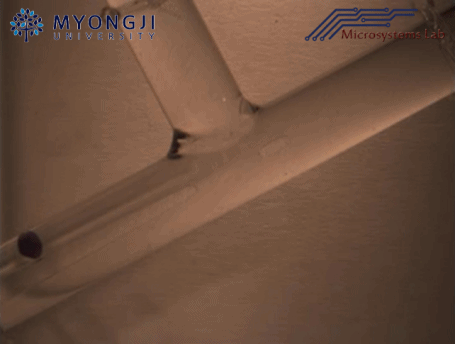
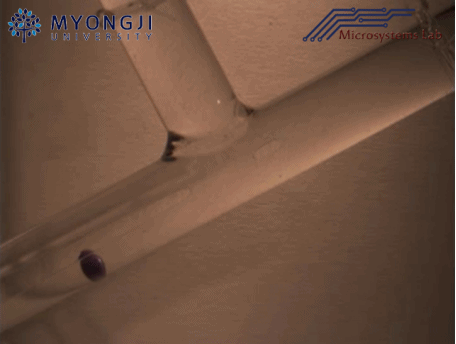
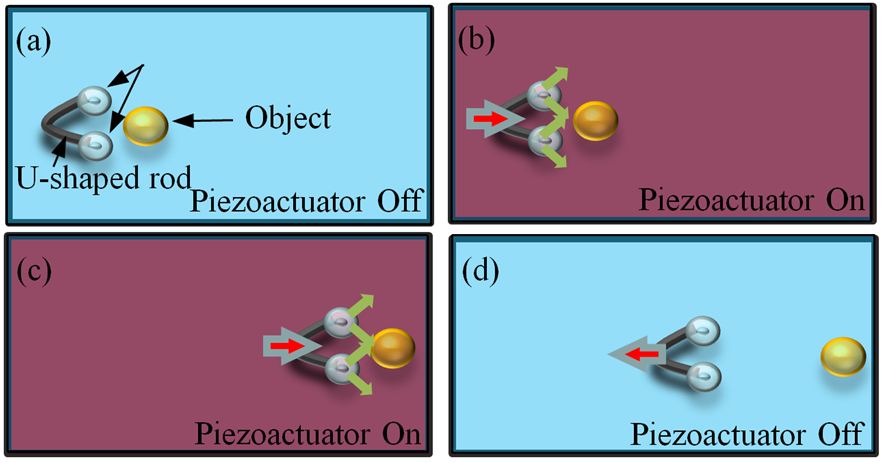
Micro-object manipulation by acoustically exited identical twin bubbles: (a) Initial state; (b) When identical bubbles on the tips of a U-shaped rod are acoustically exited, they simultaneously oscillate and generate microstreaming, which, in turn, pushes an object; (c) The rod moves to the right, and the object is carried by the microstreaming; (d) The excitation is turned off and the rod moves to the left; the object is released from the bubbles and remains at its position.
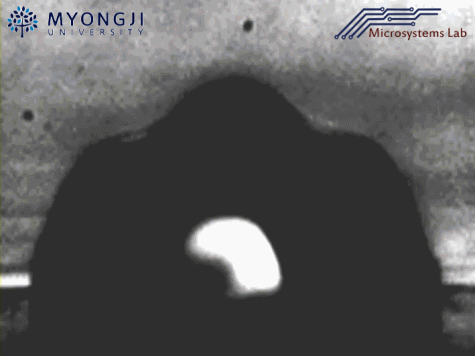
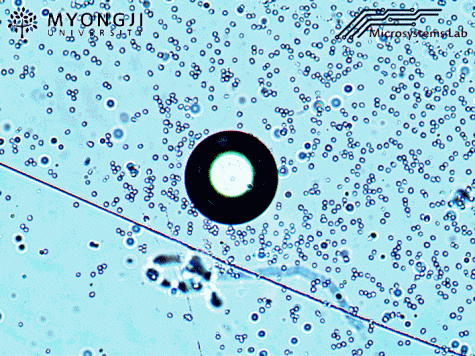
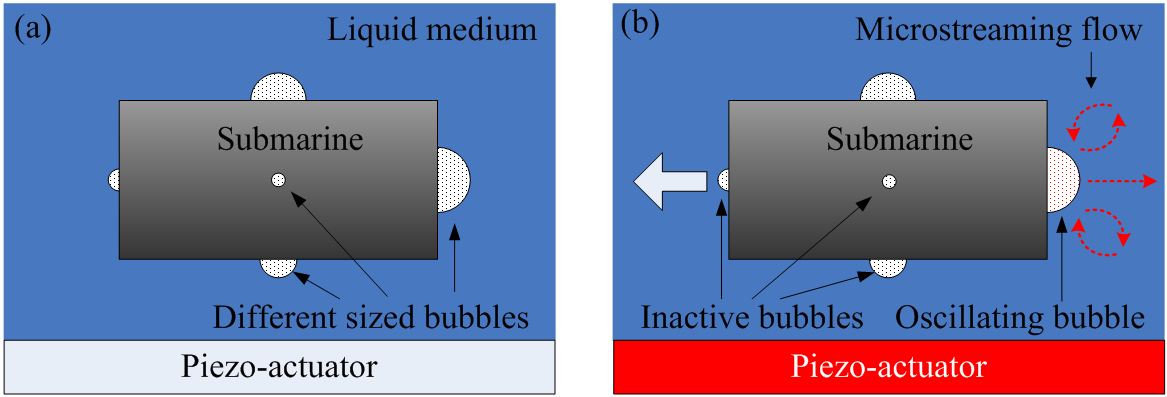
Submarine propulsion scheme by a cavitation microstreaming flow: (a) Initial state, (b) A submarine moves to the left when the bubble on the rear side of the submarine is excited by a piezo-actuator attached to the bottom of a water chamber around the bubble resonant frequency.
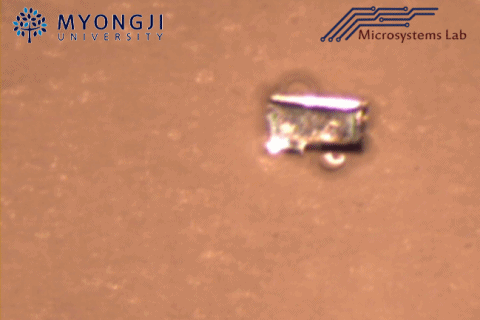
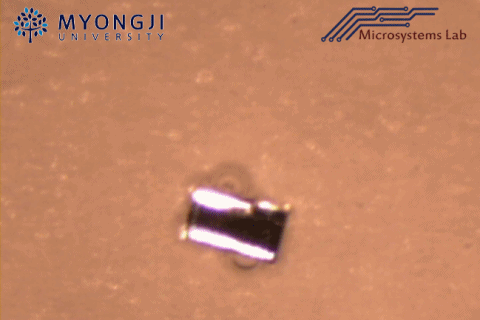
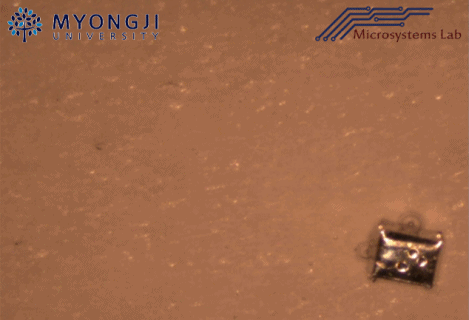

Figure illustrates EWOD (electrowetting on dielectrics) propulsion scheme in a mini-boat: (a) Initial state: horizontal force components of surface tension in the left and right are equal to each other (FLx = FRx). (b) Under voltage application to the left electrode, the contact line rises and the contact angle is decreased (EWOD actuation). That is, FLx < FRx. The boat would move from left to right.
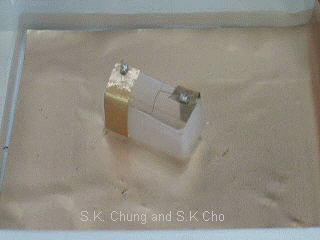
This work was featured in news media and magazines including NewScientist and PittChronicle.
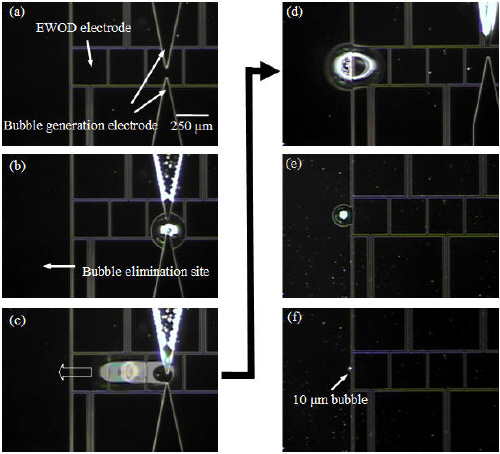
Sequential images of integrated micro bubble operations: generation, transportation, and elimination. (a-b) Note that the elimination site is formed by covering the Pt electrode with a 400 Å Teflon layer. A hydrogen-oxygen mixture bubble (250 um dia.) is generated by electrolysis from the top plate and transferred to the bottom plate. (c) The bubble is transported to the left by EWOD (d) and reaches the bubble elimination site. (e) The bubble begins to shrink by the catalytic chemical reaction. (f) The bubble is shrunken down to 10 um in diameter that is then completely removed in a few seconds.
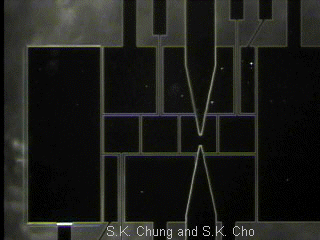

Capturing, carrying, and releasing of objects by an oscillating mobile bubble. (a)-(b) The piezo-actuator oscillates the gaseous bubble such that circulating flows are generated around the bubble (so called "cavitational microstreaming"), and then the neighboring objects are captured in and orbiting in the circulating flows. (c) As EWOD electrodes are sequentially activated to the right, the bubble is moved right. Note that the piezo-actuator is still on while the bubble is moving. As a result, the captured particles are carried by the moving bubble. (d) When the piezo-actuator is off, the continued bubble transportation completely separates the captured particles from the bubble.
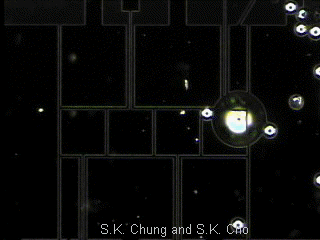
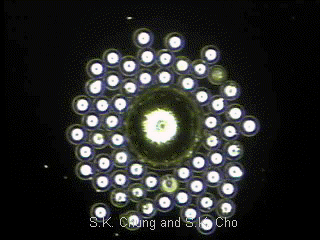
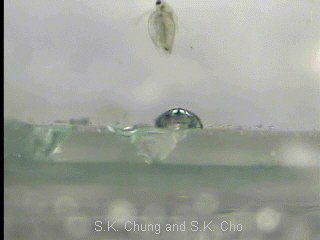
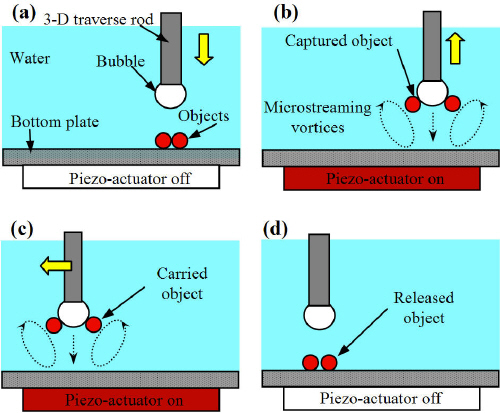
3-D manipulation: capturing, carrying, and releasing of millimeter- or micron-sized objects by an oscillating bubble attached on a 3-D traversing rod. (a) The bubble tip approaches the objects. Note that the piezo-actuator beneath the bottom substrate is still off. (b) When the bubble reaches close enough to the objects, the piezo actuator is turned on and oscillates the bubble. The oscillating bubble generates an attraction force and thus captures the objects. The dotted lines indicate vortical flows induced by the oscillating bubble (cavitational microstreaming) (c) The captured objects are carried as the rod is traversed in a 3-D space. Also note that the piezo-actuator remains on while the bubble is in traversing. (d) When the bubble reaches a destination, the piezo-actuator is off, resulting in releasing the carried objects.
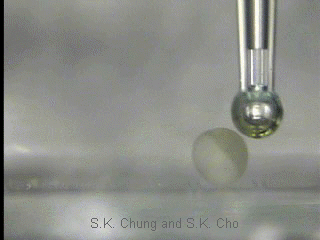
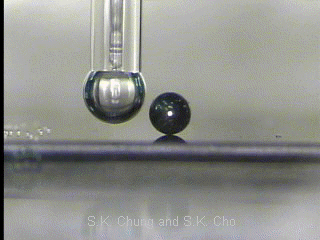
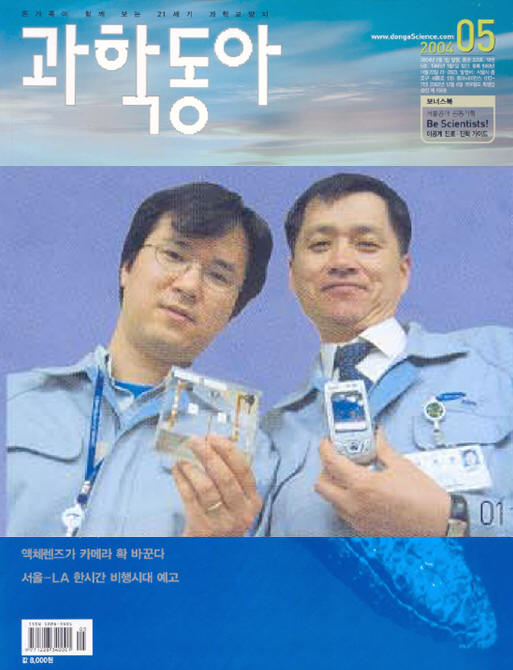
Liquid lens was introduced in Dong-A Science magazine (Korean, 2004. 05)

Samsung Electro-Mechanics Co. LTD has completed a 1.3 million-pixel, CMOS typed liquid lens camera module for mobile phones (2004. 03. 29).
This work is featured in Dong-A Science magazine (Korean). click here!
This work is featured in Mechanical Engineering Journal. click here!
This work is featured in Samsung Electro-Mechanics news for the world first liquid lens development. click here!
This work is featured in the Optical World (Korean, 2005. 01). click here!
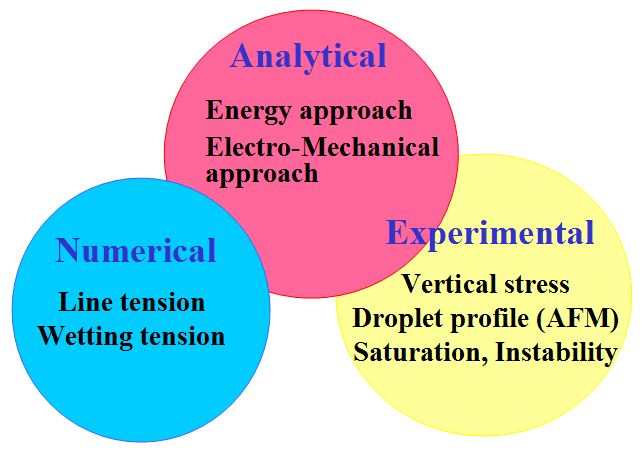
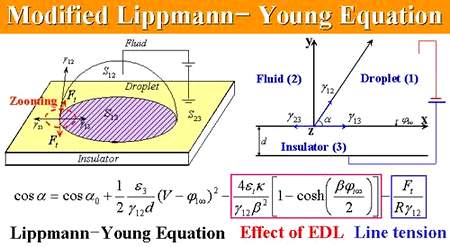
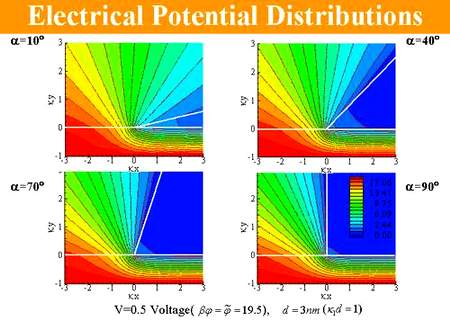
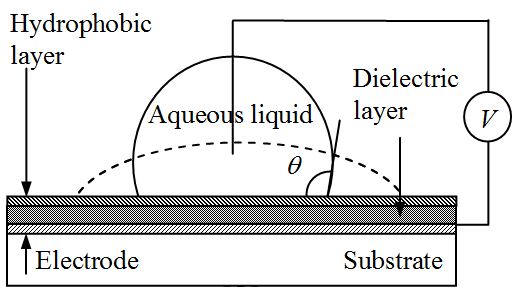
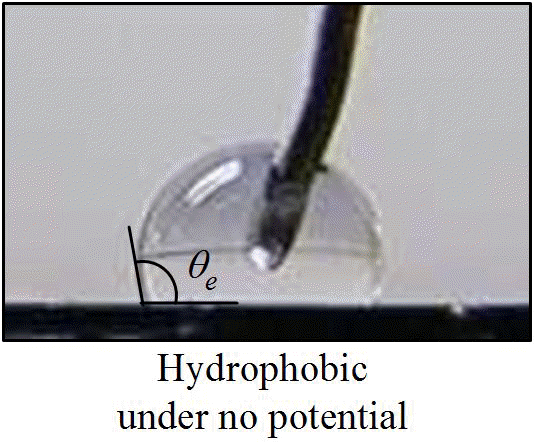
Figure illustrates the typical EWOD configuration with an aqueous sessile droplet resting on a dielectric layer covering the electrode underneath. When the electric voltage V is applied between the aqueous sessile droplet and the electrode, the droplet spontaneously spreads out on the dielectric surface. As a result, the contact angle which is defined in the liquid side is decreased. Note that the applied electric voltage (V) is valid for AC as well as DC voltages, and V is defined as the voltage across the dielectric layer, not between the electrodes. When the electric potential V is removed, the changed contact angle returns to the initial contact angle. That is, the droplet contacts back to the initial shape. As a result, the wettability of liquids on a dielectric surface can be electrically controlled with high reversibility. This phenomenon, called as electrowetting (to be exact, electrowetting on dielectric or EWOD), has outstanding features: (1) excellent reversibility; (2) extremely low power consumption (less than mW) since the dielectric layer acts like a capacitor, not energy dissipation devices; and (3) superb robustness since there is no direct electrochemical interaction between the electrode and liquid.
